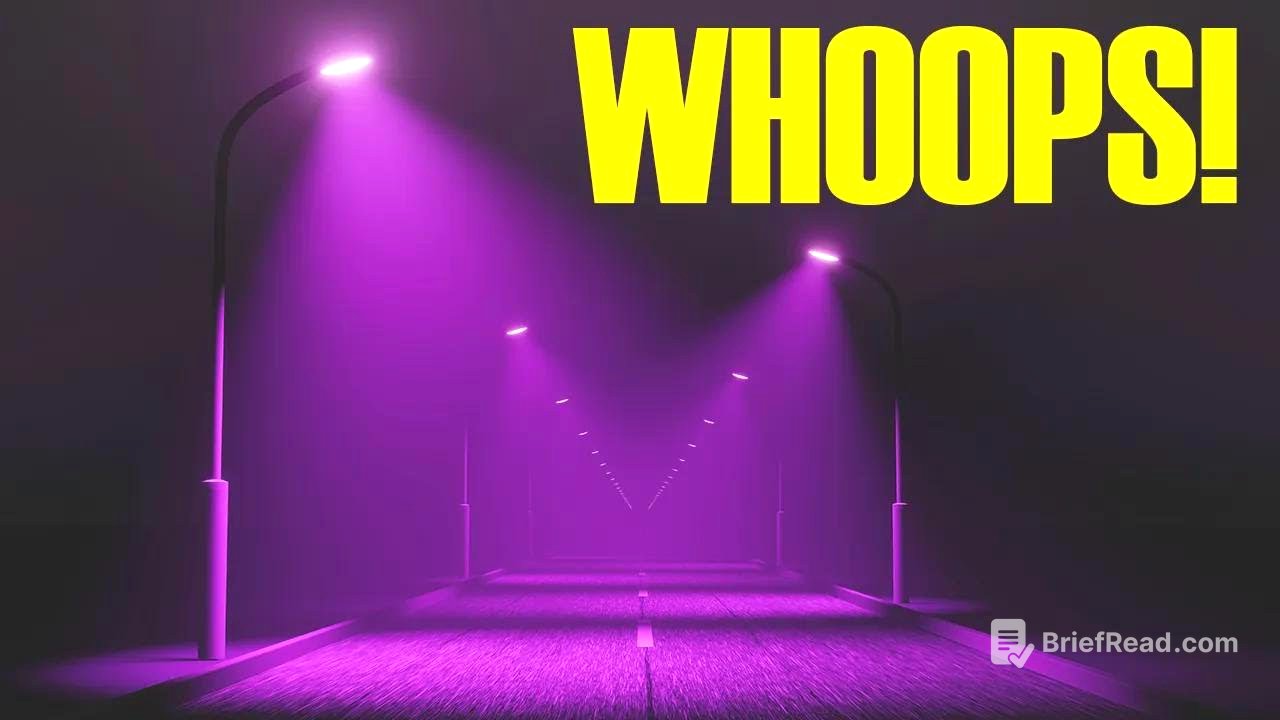TLDR;
This video explains the phenomenon of purple street lights appearing across America, attributing it to defective LED manufacturing and government contracts. It traces the evolution of street lighting from sodium vapor lamps to LEDs, highlighting the advantages and disadvantages of each. The video also touches on the impact of blue-rich LED light on wildlife and suggests red light as a potential alternative.
- Defective LED lights are turning purple due to a faulty filter.
- The shift to LED street lights was driven by energy efficiency but has resulted in unintended consequences.
- Red light could be a better option for street lighting as it reduces harm to wildlife and preserves night vision.
Fenómeno de luces moradas en América [0:00]
Many places in America have been experiencing purple street lights. This phenomenon has been widely reported in local news and online forums since 2021. The cause of these purple lights is a combination of how LEDs work, poor quality control in manufacturing, and government contracts.
Evolución de la iluminación pública [1:08]
Street lighting has evolved from incandescent bulbs to fluorescent and LED lights. In the 20th century, sodium vapor lamps, which produced yellow light, were commonly used because their light could penetrate fog effectively. Yellow light's longer wavelength prevents reflection off water droplets, making it suitable for foggy conditions. However, full-spectrum light, like sunlight, is better for illuminating objects because it allows our brains to fully understand what we're seeing.
Limitaciones de luces de vapor de sodio [2:07]
Manufacturers increased the pressure in sodium vapor lights to create more full-spectrum light. High-pressure sodium vapor lamps were used in large venues like sports stadiums because they provided broader, more uniform light resembling sunlight. However, sodium vapor lamps are inefficient and generate a lot of heat, wasting energy. Older neighborhoods used low-pressure sodium vapor lights, while newer buildings used high-pressure white lights.
Ventajas y desafíos de los LED [3:09]
LEDs are more efficient at creating light compared to incandescent bulbs. LEDs direct light more effectively and have a longer lifespan, leading cities to replace streetlights with them. Streets that once appeared orange or yellow now appear bright white. While LEDs are energy-efficient, the actual amount of light per watt compared to sodium vapor lamps isn't significantly higher.
Percepción de las luces LED [4:05]
The shift to white LED street lights posed a problem for the film industry, as it made period films look too modern. Many people dislike LED street lights because they find the light harsh, cold, and too bright. These lights produce blue light, similar to phones and computers, which can affect sleep. However, blue light increases alertness, improves memory, and enhances brain function, which are beneficial for driving at night.
Cómo los LED producen luz blanca [5:14]
Technically, there are no white LEDs. White light is produced using blue LEDs and a phosphor conversion process. The blue LED shines through a yellowish filter made of phosphor and silicone, converting it to white light. Sunlight produces radiation at every wavelength in the visible spectrum, but LEDs produce primarily one color: red, green, or blue. In street lights, manufacturers use blue LEDs with a phosphor filter to create white light that is still a little too blue.
Defectos en la fabricación de luces LED [6:58]
Many manufacturers, including American Electric Lighting and Acuity Brand Lighting, did a poor job making the filter layer in LED lights. Over time, this filter delaminated, developed cracks, or fell off the LED module. When the filter fails completely, the street light emits a completely blue light. If the filter remains partially intact, the blue light interacts with the remaining yellow filter, emitting purple light. The widespread appearance of these purple lights since 2021 is due to the replacement of old sodium lights with defective LED lights in the 2010s.
Impacto en la fauna y soluciones alternativas [8:23]
Blue light from streetlights does not improve nighttime visibility and can make it difficult to see details. A Dutch town has adopted red street lights to help residents see at night while minimizing disruption to local wildlife, particularly bats. Red LED street lights provide illumination while reducing negative effects on animals' natural daytime cycles and protecting night vision. The longer wavelength of red light means our eyes don't have to adjust as much when moving from light to dark. However, the association of red light with "stop" could pose a challenge. Despite the issues with current streetlights, they serve an essential purpose. Newer LED technology is advancing, offering warmer, more eye-pleasing lights.









